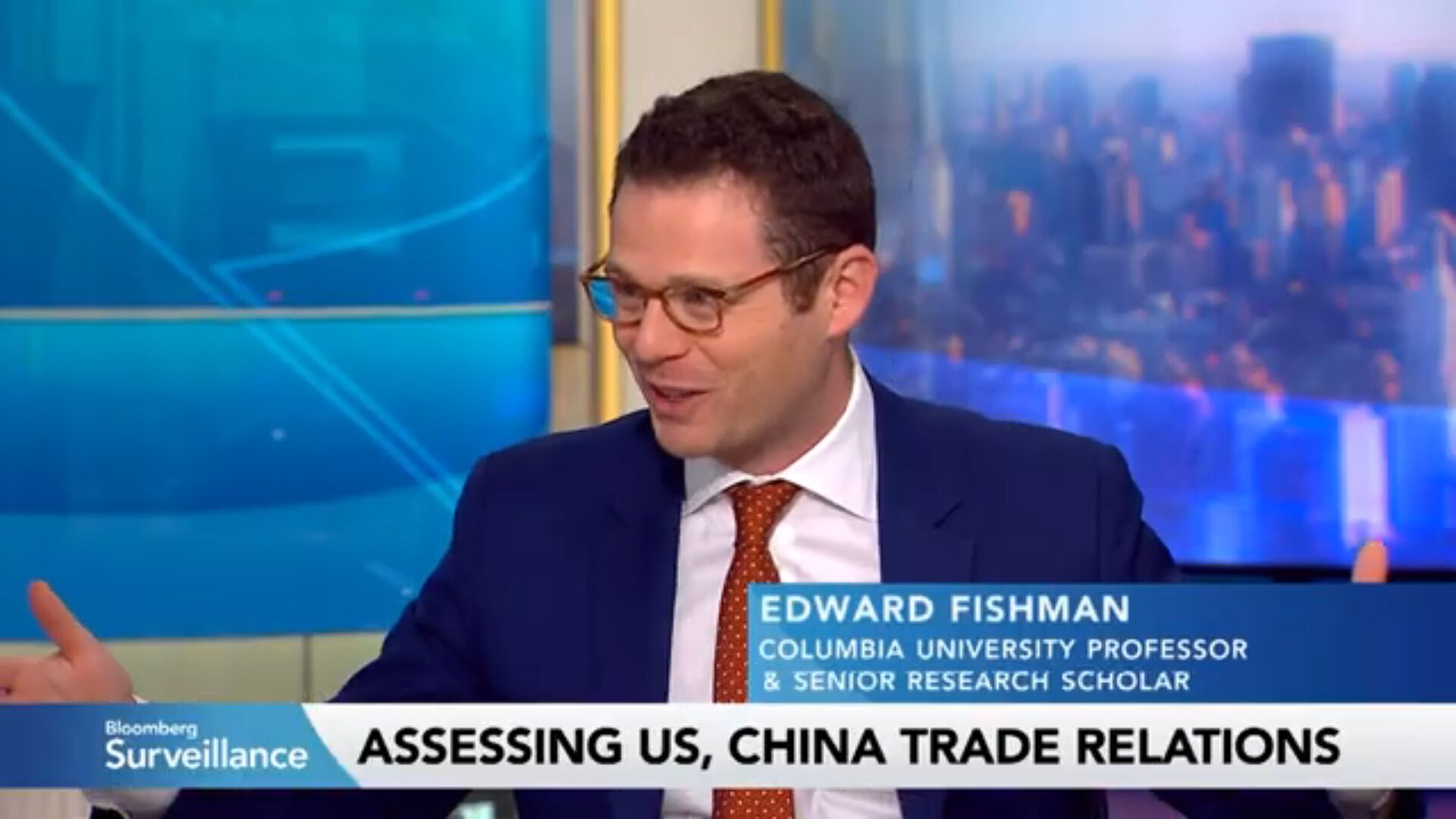
Edward Fishman on Bloomberg: Global Energy Policy
Edward Fishman joins Bloomberg on October 30, 2025. Edward Fishman is one of the world’s foremost experts on economic statecraft, with deep experience shaping U.S.…
Thought Leader: Edward Fishman

This piece is by WWSG exclusive thought leader, Peter Goodman.
Ricaurte Vásquez Morales is a man obsessed with water. An app on his phone displays the fluctuating level of Lake Gatún, the artificial reservoir that is the centerpiece of the Panama Canal system. He checks it constantly, the way a gambling addict monitors football scores. He keeps a vigilant eye on the weather.
“I love a rainy day,” he said.
Mr. Vásquez Morales is the administrator of the Panama Canal, which is both the economic heart of his isthmus nation and a central artery for global trade. More than half the container cargo moving between Asia and the East Coast of the United States passes through the shortcut notched into the Central American jungle — the connector between the Atlantic and Pacific oceans.
Last year, a drought dropped the lake to critical levels, prompting canal authorities to limit traffic. At the worst point, in December, only 22 ships a day were allowed to pass through the canal, down from the usual 36 to 38. More than 160 ships were stuck at anchor at both ends.
Rains that began in May have allowed the lifting of most restrictions, and 35 ships a day on average have made the journey in recent weeks. But canal authorities know that this is merely a respite in a new era influenced by climate change and frequent periods of El Niño, when ocean temperatures rise and rainfall decreases. They are consumed with expanding water storage.
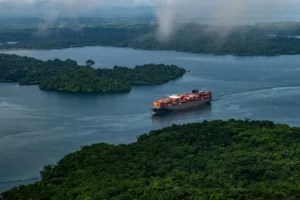
A dam envisioned for the Río Indio, a winding river southwest of Lake Gatún, would create another reservoir that could be used to replenish the canal during droughts. The project would also flood the homes of 2,000 predominantly poor people who would need to be relocated and would risk losing their means of earning a living.
The Panama Canal is one component of a system of global trade struggling to adjust to a complex mix of environmental, geopolitical and economic changes.
Three years ago, an enormous container vessel got lodged inside the Suez Canal in Egypt, closing that waterway to ships moving between Europe and Asia. In recent months, ships headed toward the canal have been threatened by violent attacks from Houthi rebels in Yemen, prompting them to instead travel the long way around Africa, imposing delays and sending shipping rates skyward.
Strikes or threatened work stoppages have disrupted ports from Germany to Canada to the East Coast of the United States.
The trouble hovering over the Panama Canal is more existential and cannot be fixed with a cease-fire agreement or a new labor contract.
“The past 20 years have been totally different than from the previous 80 years,” said Victor Vial, the canal’s chief financial officer. “Forget about 2000 and before, because climate change has, in crescendo, had an impact that’s much different.”
From the air, the Panama Canal is revealed as a monumental drainage system powered entirely by gravity. Lake Gatún occupies the midsection, a shimmering expanse of water seeping toward the horizons, dotted by jungle-draped islands.
Water from the lake flows through a series of canal locks that function like ladders. The locks are needed to lift ships from the coast up into the interior of the country, and then gradually down to the opposite shore. In a quirk of geography, the Pacific Coast is actually higher than the Atlantic, necessitating some sort of ladder.
Ships pull into entrances on the Atlantic and Pacific coasts, then pass through pairs of floating gates that stop the water from flowing downhill, causing it to pool. Once the water rises sufficiently, lifting ships to the next stage, the gates are opened and vessels can continue. After ships cross the lake, they pass through more locks, this time headed back down to sea level. The crossing runs 50 miles and typically takes 12 hours.
Staggering volumes of water from Lake Gatún are required to make the system work. The passage of a single ship needs more than 50 million gallons of water. Every day, the canal uses two-and-a-half times the amount of water consumed by the 8 million residents of New York City.
In a normal year, some 13,000 ships complete that journey. Since last October, traffic has been running at an annual pace of only 10,000 vessels.
For much of the last year, because of the lower water levels, the largest container ships were required to reduce their cargo by unloading boxes at ports at the start of their canal journey, then hauling them across the land by truck or rail.
The canal pulls water from storage tanks built alongside the locks, reducing the amount of water drained from Lake Gatún for the passage of each ship.
But that tends to increase salinity in the lake, which is also the source of drinking water for more than half of Panama’s 4.4 million people.
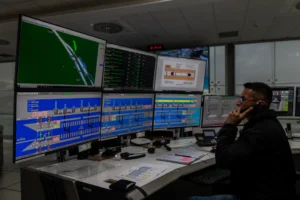
Canal authorities have been exploring ways to desalinate portions of the lake. They are also testing ways to seed clouds to increase rainfall.
But the central fix is creating a second water source for the canal with the proposed dam on the Río Indio.
The canal authority had contemplated that option for decades, especially as the population of the Panama City metro area swelled to 2.5 million, increasing demand for drinking water. But an old law made the river beyond reach of the watershed controlled by the canal.
Last month, Panama’s Supreme Court struck down that limitation. The canal authority is now moving ahead with planning for the project, which is expected to take six years and cost $1.6 billion.
“Fortunately, we now have a path forward,” said Mr. Vial. “That should take care of the next 50 years.”
Now canal authorities are focused on winning the assent of the people who are effectively in the way. It is exploring places to relocate villages, opening outreach offices in affected communities, and expanding efforts to grow cash crops like coffee to replace livelihoods that will be uprooted.
It is also helping families secure legal title to land they have farmed for years, setting them up to receive compensation.
“At the end of the day,” Mr. Vial said, “they are going to be better off than they are now.”
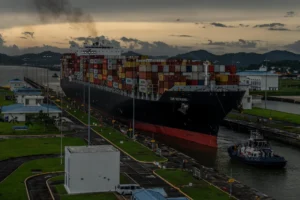
Olegario Hernandez is deeply suspicious of such talk.
For the last 64 years, he has lived and farmed in the village of Limon, a scattering of houses carved into the jungle in Colon Province, near a bend in the coffee-colored river that is slated for the dam.
A hand-painted sign affixed to his front fence declares a popular local sentiment: “No to the reservoir.”
Mr. Hernandez’s home is constructed of rough boards and corrugated sheets of aluminum. He lacks electricity and indoor plumbing. Yet as he sits in the shade of his patio on a sweltering afternoon, he takes satisfaction in what he has constructed.
For decades, he grew corn, rice, yucca and plantains — enough to feed his six children. At 86, he can no longer work the land, instead leasing it to cattle ranchers. He has no appetite for starting over, and especially not for the sake of easing the passage for ships carrying televisions from Chinese factories to air-conditioned homes in the New York suburbs.
“They want to relocate us, but we don’t think that way,” he said. “There’s no place better.”
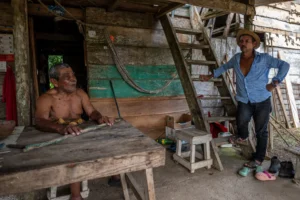
Across the road in front of his house, school is in session. The teachers wonder what will happen to their students after the dam is built. Some walk for as long as three or four hours to get to school. They stash their black leather shoes — part of their required uniform — at houses in the village, donning flip-flops to cross the muddy river toward their homes on the other side. Many rely on the school kitchen for their only reliable meals of the day.
“They will lose everything,” said the school’s principal, Ophelia Grenald, 45. “They will not be able to be educated.”
The canal’s outreach office is so removed from the capital that the man behind the desk, Esteban Sanchez, has little information.
People arrive having heard about the dam on the radio. When will it be built? Where will people be moved? Some are already selling their cows in anticipation. Many want to apply for construction jobs.
He does not liberate them from uncertainty.
“I answer that we are only in the phase of studying,” he said.
Yet inside the fortresslike offices of the canal authority in Panama City, the people in charge are proceeding on the assumption that the dam is going ahead.
“It gives you one added element to your toolbox,” said Mr. Vásquez Morales, the canal administrator.
He checks the app on his phone. Lake Gatún is at 83.5 feet, the ideal depth. He peers out the window. Menacing clouds hang low over the land, a promising portent.
Some worry that the lifting of the siege mentality — the ending of the drought — may slow momentum to expand the water supply.
“Rain not only washes the streets, it washes our minds and we think the problem is gone,” said Carlos Urriola, president of SSA International, which operates shipping terminals around the world, including at the Panama Canal. “The problem of water is a permanent one.”
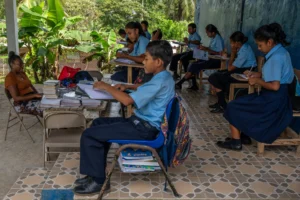
Peter Goodman is a reporter who covers the global economy. He writes about the intersection of economics and geopolitics, with particular emphasis on the consequences for people and their lives and livelihoods.
Edward Fishman on Bloomberg: Global Energy Policy
Edward Fishman joins Bloomberg on October 30, 2025. Edward Fishman is one of the world’s foremost experts on economic statecraft, with deep experience shaping U.S.…
Thought Leader: Edward Fishman
4 Strategies Providers Are Using to Strengthen the Healthcare Workforce
During Reuters’ Total Health conference in Chicago, four healthcare leaders shared the strategies they believe will help fortify the workforce for the future. Healthcare’s workforce crisis continues…
Thought Leader: Dave Chokshi
Lisa Bodell: Smart Leaders Sabotage Their Own Strategies
Traditional strategic planning is often more of a ritual than a breakthrough moment. Teams gather, review last year’s metrics, and churn out a cookie-cutter annual…
Thought Leader: Lisa Bodell

